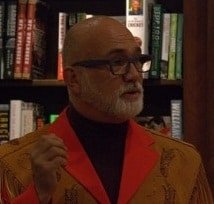
A Credibly Accused War Criminal Reflects on Al-Qaeda and the War of 1812
by Anthony J. Hall
Cheney, Torture, Pedophilia, and the Vancouver Club
(October 8, 2011) – Former US Vice-President Dick Cheney met a large and extremely committed contingent of citizen jurists who assembled by the many hundreds at the Vancouver Club on September 26, 2011. Cheney had come at the invitation of the Bon Mot Book Club. His visit was calculated to give a Canadian boost to the beginning of his tour to promote his political memoire, In My Time.i
When Cheney took charge of the microphone at the Vancouver Club, those assembled outside to protest his presence in Canada far outnumbered those who had paid $500 each to hear this modern-day warlord regurgitate his slogans of crusade and conquest.

Throughout British Columbia and the Pacific Northwest the site of Dick Cheney’s speaking event is widely regarded as an important site of privilege and prestige. The Vancouver Club is also a place permeated with the aura of hushed-up scandal. In 1994, for instance, lawyer Jack Cram was hauled to jail from his home after referring to Whistler and the Vancouver Club in allegations that a pedophile ring was selling sex with Aboriginal children to rich and influential clients, including some in the criminal justice system.
Cram’s allegations were intertwined with his charge that systemic corruption had undermined the integrity of processes for litigating the scope and reach of Aboriginal title in the lands of British Columbia, a province that developed outside key features of the rule of law in British North America. Unlike most other Canadian provinces, BC’s founders long averted any fundamental reckoning with the legal principle outlined in the Royal Proclamation of 1763 stipulating that treaties must be negotiated with Indigenous peoples before large-scale Euro-North American settlement could proceed on their Aboriginal lands. In his affidavit outlining his experiences and understandings, Cram explained how he had been injected against his will with drugs inducing prolonged incoherence while he was being held in Crown custody.ii
The merger on September 26 of the sordid histories of the former US Vice-President, the Vancouver Club, and the violations of Aboriginal title in British Columbia helped energize our contingent of citizens jurists when we deputized ourselves to demand that police enforce domestic and international law on Dick Cheney. Many layers of pathology, therefore, lay beneath this very public display of frustration with the failure of law enforcement agencies to do their job when it comes to dealing with the highest order of international crime.
[youtube 9WFHB4EZSzM]
Professor Anthony J. Hall Explains Why Dick Cheney Ought to Be Arrested in Canada
 Even more than the supposed #1 man in the Bush administration, Cheney came to epitomize for many the arrogant contempt of the US executive branch for any legal restraints whatsoever on the exercise of its coercive military capacities anywhere in the world. For millions, Cheney pretty much came to personify the axis of oppressiveness linking Wall Street and the Pentagon. His personae has become a virtual caricature of vampire capitalism whose operatives have been sucking economic vitality from society even as the war machine thrives through the commodification of fear, misery and death.
Even more than the supposed #1 man in the Bush administration, Cheney came to epitomize for many the arrogant contempt of the US executive branch for any legal restraints whatsoever on the exercise of its coercive military capacities anywhere in the world. For millions, Cheney pretty much came to personify the axis of oppressiveness linking Wall Street and the Pentagon. His personae has become a virtual caricature of vampire capitalism whose operatives have been sucking economic vitality from society even as the war machine thrives through the commodification of fear, misery and death.
There are many ways to describe the new frontiers of criminality charted by Dick Cheney when he was the most influential hands-on operative in the war cabinet of President George W. Bush. Cheney presided over the most radical wing of neo-con militarism whose members, including Donald Rumsfeld, Paul Wolfowitz, and Condolezza Rice, moved towards the imperial cockpit of American presidential power in the Bush White House through their shared involvement in the Project for the New American Century (PNAC). Once the neo-cons took office in 2001, 9/11 provided the psychological shock equivalent to “the new Pearl Harbor” that PNAC’s planners had declared necessary in order to align public opinion behind the agenda to further militarize, empower and expand the American Empire.iii
It is the legacy of the 9/11 Wars, but especially the preoccupation of its American protagonists with torture, that most undisputedly makes Dick Cheney a credibly-accused war criminal. The case for his arrest for the crime of ordering and directing torture has been widely advanced including by Amnesty International and Human Rights Watch. In the view of anti-war jurist Gail Davidson, the body of evidence is overwhelming that when he was in office Dick Cheney “authorized, directed, ordered, supervised, and failed to prevent the commission of a wide range of crimes against humanity and war crimes.”iv
Freshly-installed in the House of Commons as Canada’s official opposition, the New Democratic Party added its influential voice to the chorus of those calling for Cheney to be held legally accountable for his now self-confessed criminal activity while in office. In doing so the NDP send out an important signal that the 2011 Canadian election really has transformed the political landscape of the country that used to be considered the third locus of power in the North Atlantic Triangle.v

As Don Davies, Official Opposition Critic for Citizenship, Immigration and Multiculturalism, wrote on September 23 to the Harper government’s Immigration Minister, Jason Kenney, “Mr. Cheney has publicly, unequivocally and on numerous occasions admitted to authorizing, approving and failing to prevent acts of torture in circumstances that engage each and every provision of Immigration and Refugee Protection Act quoted above. These acts include approving the use of water boarding (simulated drowning), sleep deprivation and other treatments prohibited by both Canadian and international law.”
The NDP’s Immigration critic, Don Davies, devoted particular criticism to the treatment meted out to Canadian citizen Omar Khadr by the US government at its illegal Guantanamo Bay incarceration facility. Khadr’s arrest and incarceration while he was a child soldier in Afghanistan constitutes a gross violation of many international treaties and protocols. Prime Minister Stephen Harper is a party in these violations of the international laws pertaining to child soldiers.
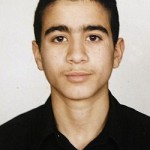
In his explanation of why Dick Cheney should not be allowed into Canada, Davies wrote: The Supreme Court of Canada in Canada (Justice) v. Khadr confirmed that the government administration in which Mr. Cheney was a senior official engaged in treatment of prisoners in Guantanamo Bay, Cuba, that violated the Geneva Conventions, Canada’s domestic law and Canada’s international legal obligations.The Federal Court of Canada has similarly found in Khadr v. The Prime Minister et. al. that US treatment against prisoners (and of a Canadian citizen, no less) violated the Convention Against Torture and other Cruel, Inhuman and Degrading Punishment and Treatment and further that Mr. Khadr’s detention itself was illegal under international law.vi
Cheney in the White House Bunker on the Morning of 9/11
Most of the organizations sponsoring the protests at the Vancouver Club ended their analysis with considerations of Cheney’s role in those criminal activities mounted in the name of the Global War on Terror. Many of the protestors on the ground, however, (myself included) were moved to act by additional considerations. We saw the occasion of Cheney’s literary self-promotion in Vancouver as an opportunity to draw attention to the former US Vice-President’s crucial, but still-largely unexplained role at the levers of control over the US military apparatus on the morning of September 11, 2001.
If we lived in a world with a credible rule of law, a condition that obviously does not prevail in these times when the imperatives of truth are sacrificed again and again to the imperatives of war, then Dick Cheney would have been arrested long ago. He would have long since been picked up by police and interrogated about his abundant connections to the lies and crimes of 9/11. The line of questioning would aim especially at Cheney’s role or lack thereof in the incoming projectile’s hit on the Pentagon, the imperial headquarters of the American war machine that inexplicably was left completely undefended on 9/11. There are dozens of federal videos recorded from many angles capturing an abundance of true pictures of what actually happened at the Pentagon on the morning of 9/11. The federal government is hiding these crucial records of this highly contested event. As subsequent history would show, the weird sequence of dense and violent occurrences at the Pentagon on the morning of 9/11 would prove crucial in advancing the turn towards the universal prison of a global police state.

Many of the unanswered questions about Cheney’s role in the defining crime of our times come down to his activities on the morning of 9/11 in the so-called Bunker, the installation under the White House known technically as the Presidential Emergency Operations Center. The questions begin with the existence of several disparate accounts, including several from Cheney himself, about the timing of the former US Vice-President’s entry to the Bunker.vii Transportation Secretary Norman Mineta asserts that when he entered the military control facility at about 9:20 am on the morning of 9/11 Cheney was already present and giving orders. Cheney’s own, sometimes-internally-contradictory accounts would put him in the Bunker sometime around 10 am.
This question of timing is crucial. It speaks to the credibility of Mineta’s important testimony concerning the directives that Cheney allegedly gave as the flying object that would hit the Pentagon at 9:37 am approached its target? The continuing uncertainties concerning this matter are part of a larger array of unanswered questions concerning the positioning of Dick Cheney at the helm of the US war machine on the morning of 9/11. It is important to know, for instance, with whom Cheney communicated through on-the-record communications devices in the Bunker as well as, possibly, off-the-record phone calls in the attending hallway? Was it mere chance or something more sinister that put Cheney at the levers of imperial control in Washington while the US president was intently reading a story about a pet goat to school children in Sarasota Florida? Why was there no fighter jet escort assigned to the president’s Air Force One when Bush and his entourage finally took off from Sarasota Airport after their prolonged stay at the Emma E. Booker Elementary School during the height of the destruction in New York and Washington?
Even before Air Force One took off, the secret service became aware in Sarasota of threats to attack the presidential aircraft. These threats continued throughout the morning of 9/11? Who sent out these threats, including the warning received onboard that “Angel Is Next.” Angel was then the secret code word for Air Force One? Did the would-be attackers of Air Force One have access to the White House’s secret communications codes, including those that activate control over the USA’s nuclear arsenal? What was the relationship of Dick Cheney to those that threatened to assassinate the US president and his entourage by attacking Air Force One on the morning of 9/11? What was the nature of the communications between the VP and the imperiled US president who was drawn away on 9/11 from the nation’s capital into the American Mid-West?
Like George Bush himself, Dick Cheney was never required by the 9/11 Commission to give testimony under oath about what transpired when the most elaborate military machine the world has ever seen was made to stand idly by as three World Trade Centers in New York were pulverized and as a small projectile penetrated multiple walls of the Pentagon. This failure of response occurred during the hours when Cheney was at the executive helm of a US military apparatus that he personally had helped to design and build up over the course of a long and controversial career in business and government.
With the possible exception of Donald Rumsfeld, no one in the United States understood quite as well as Dick Cheney how the emergency measure procedures of the US executive branch are supposed to function under centralized control in times of great crisis. Cheney’s core involvement at the very heart of one of the most terrible tragedies ever to befall America makes his testimony under oath absolutely crucial to obtain while he is still alive. How much longer will Cheney’s maimed heart beat like it did when he held forth at the Vancouver Club under Canada’s police protection.
News about the threat on Air Force One was a subject of intense discussion between George Bush and Dick Cheney on 9/11. Moreover, the subject was quite widely discussed in official circles and the mainstream media in the immediate wake of 9/11 because it touched on allegations that the US President had acted in a cowardly fashion by not returning immediately to his command posts in Washington. The well-documented threat on Air Force One on 9/11, including the protagonists’ possession of the secret codes need to communicate with this famous airplane, thus form part of the evidence indicating the perpetrators of the crime included infiltrators with access to the national security apparatus of the US superpower.
This evidence runs contrary to the imagery dispensed almost immediately by the mainstream media that the culprits were entirely external to US officialdom specifically as well as to the security services of the West more generally. None other than Noam Chomsky, America’s most widely-quoted dissident academic, promptly repeated this most misleading aspect of the official fable of 9/11. Chomsky asserted in one of the first book-length discussions of the September 11 debacle that “There is no serious doubt that [9/11] attack was ‘external.’” In the face of considerable evidence to the contrary, Chomsky mused without evidence that the 9/11 episode “was surely an enormous shock and surprise to the intelligence services of the West, including the United States.”viii
Dick Cheney is in the best position to speak directly to the nature of his discussions on 9/11 with the inept figurehead of the Bush presidency. George Bush’s already minimalist role in his own adminstration was pushed even further to the to the margins of federal decision making during the most crucial period of the 9/11 crisis. Why was the US President essentially missing in action during the most consequential hours of his presidency?
Cheney can and must speak to what actually happened when he, as the Bush regime’s primary hands-on operative, took firm control of federal war powers during the originating acts of the Global War on Terror. Was Cheney involved, for instance, in some sort of negotiations on the morning of 9/11 between the US president and those threatening to kill George Bush and his entourage by blasting Air Force One from the sky? Was some sort of deal worked out on 9/11 to induct the US president as a full partner in the plot that was about to reconfigure the landscape of global geopolitics? As Webster Tarpley has appropriately asked, “Was Cheney communicating the demands of the coup faction to Bush? Was Cheney reporting these demands or was he urging Bush to accept them?”ix
The many unanswered questions concerning Dick Cheney’s role in 9/11 need to be seen in the context of his history of long-term involvement at or near the executive functions governing the most secretive branches of the American war machine, an immense and unwieldy contraption that grew into a monstrosity during the course of the Cold War. The ongoing disaster in the US-designed and US-made GE Mark I reactors at Fukushima forms a fitting metaphor for the condition of America’s spewing nuclear-propelled mechanisms for global domination. Dick Cheney has presided in one way or another over the construction of these mechanisms militarized control. Cheney has thrived in the most lucrative zone of crony capitalism where the many of the largest US-based corporations depend in large measure for their profits on lucrative military contracts funded by federal paymasters in the US executive branch.x
As Peter Dale Scott has demonstrated in The Road to 9/11, a peer-reviewed academic publication published by the University of California Press, Cheney and his initial patron in government, Donald Rumsfeld, are veteran Cold Warriors with a long history of collaboration in elaborating the very structure of laws, policies, institutions and political arrangements that jumped into prominence with the events of 9/11. At the basis of this structure is an emergency-measures regime of unbounded executive authority. This package of procedural and logistical devices for subordinating all functions of governance to the executive authority of the US Commander-In-Chief is misleadingly named Continuity of Government (COG).
Scott has argued that the COG provisions for reconfiguring the US Constitution in times of grave danger were probably invoked by Cheney when he was in the Bunker. Scott writes that on 9/11 “Cheney and Rumsfeld suddenly began to act out parts of a script they had rehearsed years before.” Both men placed high priority on 9/11 to arranging helicopter lifts to whisk Paul Wolfowitz and others to some secret COG underground base.xi
Cheney first jumped to national prominence in 1975 he was when successfully recommended by Donald Rumsfeld as his replacement for the job of President Gerald Ford’s Chief of Staff. At the time Cheney was only 33 years old. Since then Cheney has served as a Congressman for Wyoming, as a Director of the Council on Foreign Relations, as Defense Secretary for George H.W. Bush, as an adviser to the Jewish Institute for National Security, and, between 1995 and 2000, as the Chairman of the Board and CEO of Halliburton Corporation. Halliburton is well known military company poised between Big Oil and the energy and other logistical requirements of the US Armed Forces.
From the Cold War to the Global War on Terror Al-Qaeda Made to Replace the Soviet Union as the Empire’s Necessary Global Enemy
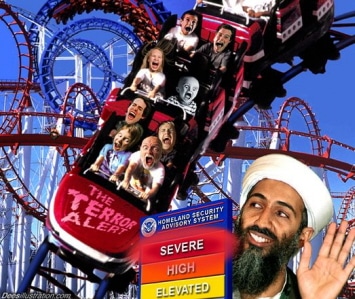
The demise of the Soviet Union in 1992 was a real problem for Dick Cheney and the powerful corporate and class interests he so evocatively embodied and represented during his long career. The sudden demise of the premier enemy of the capitalist side in the Cold War posed a major threat to the continuing dominance of the national security state whose agents regularly move along the lucrative axis of corporate enrichment linking the White house, the Pentagon and Wall Street. Without the Soviet system to oppose, the operatives of the war machine began to encounter new obstacles blocking interventions throughout the world to augment the wealth of some of world’s largest companies as well as their primary beneficiaries. The continuing viability of the permanent war economy that has prevailed since the US entered the Second World War was seriously imperiled when the prospects of global peace improved with the dismantling of the Berlin Wall.
The demise of the Soviet Union embodied a particularly significant check on the fortunes of those elites that had benefited most from building up the vast military-industrial apparatuses, together with the instruments of psychological warfare, that were collectively devoted to the cause of militant anti-communism in the Cold War. Without a major global enemy to oppose global citizens around the world would be free to move beyond state-imposed dictates distinguishing friend from foe. The opening up of this broader capacity for liberty and self-determination in the global community threatened to strip elites of their historic imperative to decide who is savage and who is civilized, who belongs on our side and who should be considered the enemy, who is to be encompassed by “us” and who is to be set apart as the Other, the alien, the aberrant.
From China to Mauritius to Djibouti and beyond, the dominant interpretation given 9/11 from day one strengthened the capacity of elites the world over to depict those that refused to conform to the imperatives of neocolonialism and ruling class privilege as terrorists or potential terrorists.xii
The further empowerment of the powerful began by apparently strengthening the international hand of both Israel and the global superpower. As Benjamin Netanyahu told an audience at Bar Ilan University in looking back on 9/11, “We [in Israel] are benefiting from one thing, and that is the attack on the Twin Towers and the Pentagon, and the American struggle in Iraq. [These events] swung American public opinion in our favor.”xiii
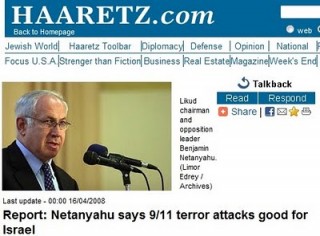 On 9/11 Israel’s position was strengthened and the permanent war economy of the United States was dramatically rejuvenated.xiv Old Cold War elites such as Dick Cheney and Donald Rumsfeld were in a single day renewed in their prestige and importance even as they and the federal agencies over which they presided quickly began directing huge new flows of federal funding to contractors of all kinds as they busied themselves building up what I refer to in Earth into Property as the privatized terror economy.
On 9/11 Israel’s position was strengthened and the permanent war economy of the United States was dramatically rejuvenated.xiv Old Cold War elites such as Dick Cheney and Donald Rumsfeld were in a single day renewed in their prestige and importance even as they and the federal agencies over which they presided quickly began directing huge new flows of federal funding to contractors of all kinds as they busied themselves building up what I refer to in Earth into Property as the privatized terror economy.
The transformation of these new flows of money into thousands of new businesses, scores of new government agencies and major real estate developments throughout the United States has been well documented by Dana Priest and William M. Arkin in 2010 in an important series of articles in The Washington Post entitled “Top Secret America.”xv Many hundreds of thousands of individuals during a time of economic contraction in Top Secret America helped to broaden the political base of those with a vested interest in bowing reverentially to the sacred myth of 9/11 as an attack mounted externally by enemy aliens acting independently.
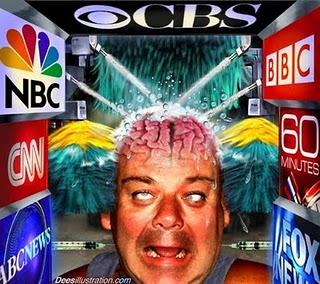
It became strategically inexpedient for ambitious careerists in many fields, but particularly in journalism, academia, and politics, to engage with the abundant evidence of massive frauds and cover-up supporting the constructed mythology of the 9/11 fable. The original psy op of 9/11 provided the archetype for the war propaganda permeating the Global War on Terror. At the core of this propaganda is the sacred myth of 9/11 as a primordial ritual of blood sacrifice and martyrdom of our own at the hands of vengeful infidels. The power of this symbolism packs the psychology of the 9/11 Wars with the punch of religious zealotry. The genocidal outgrowths of the Global War on Terror continue in this era when Benjamin Netanyahu, Barack Obama, Stephen Harper, Nicolas Sarkozy and David Cameron provide the public face for “the West’s” most recent waves of assault on those that Franz Fanon once labeled as the wretched of the earth.
A system of professional rewards and punishments has had the effect of protecting the beneficiaries of the lies and crimes of 9/11.
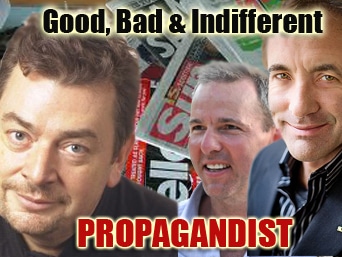 This perversion of critical inquiry has subverted the quality of many forms of public discourse especially in schools of higher learning and across media venues of all kinds. In the place of serious commentary on the most consequential crime of the twenty-first century we have been served up a pitiful brew of psychobabble from the likes of Jonathan Kay, Michael Shermer and David Aaronovitch. These well-paid propagandists for aggressive war have cobbled together an unconnected array of investigations and investigators, good, bad and indifferent, and artificially grouped them together as an undifferentiated mass of “conspiracy theories” and “conspiracists.” The aim of these crude efforts of guilt-by-association has been to divert attention away from genuine illuminations of power’s corrupt workings, but most especially those that shed light on the lies and crimes of 9/11.xvi
This perversion of critical inquiry has subverted the quality of many forms of public discourse especially in schools of higher learning and across media venues of all kinds. In the place of serious commentary on the most consequential crime of the twenty-first century we have been served up a pitiful brew of psychobabble from the likes of Jonathan Kay, Michael Shermer and David Aaronovitch. These well-paid propagandists for aggressive war have cobbled together an unconnected array of investigations and investigators, good, bad and indifferent, and artificially grouped them together as an undifferentiated mass of “conspiracy theories” and “conspiracists.” The aim of these crude efforts of guilt-by-association has been to divert attention away from genuine illuminations of power’s corrupt workings, but most especially those that shed light on the lies and crimes of 9/11.xvi
The renewal of the permanent war economy in the United States was not the only agenda advanced as the events of 9/11 gave rise to the Global War on Terror. Throughout the 1980s and 1990s Benjamin Netanyahu and the Likudnik faction on the right wing of Israeli politics continued to develop a plan to transform Israel’s local enemies into the West’s enemies in the name of a war on international terrorism. This plan found affirmation in Netanyahu’s 1986 text, Terrorism: How the West Can Win and his subsequent publication a decade later, Fighting Terrorism: How the West Can Defeat Domestic and International Terrorists.xvii
The export of Likudnik techniques for demonizing Arab and Muslim peoples in the perceptions of many occurred against a background where the Cold War’s end was rendering it more difficult for the apartheid regime of South Africa to smear as communists its opponents in the outlawed African National Congress. The lessons of South Africa’s transformation after the Cold War were noted by those who had collaborated with the White supremacist state in developing nuclear weapons. For many reasons, therefore, the route of least resistance in maintaining those hierarchies of power supported by the Cold War was to replace anti-communism with a global war on terrorism. The all-purpose boogeyman of al-Qaeda would be made to stand in for the defunct Soviet state as the global enemy to be defeated through military interventions especially in resource-rich Eurasia and police-state encroachments at home.
Netanyahu emerged as the Godfather of the of the crime cartel whose primary American lobby was the Project for a New American Century. 9/11 was engineered primarily to depict Israel’s regional enemies as global enemies to the West. The psy ops dramatists of the Global War on Terror represent Islam as an alien tradition outside the Judeo-Christian heritage of Western Civilization. One of the engineers of this psychological operation was Orientalist scholar Professor Bernard Lewis.xviii The Lewis meme of Islamic otherness was broadened and popularized by Professor Samuel Huntington in his article and book entitled A Clash of Civilizations.xix
The New Labour government of Prime Minister Tony Blair formed another component of the converging interests that combined to exploit the instantaneously-produced interpretation of 9/11 as an act of war initiated by enemy aliens of Islamic faith. As John Pilger has convincingly demonstrated, Blair’s government came to power in 1997 with the concerted backing of Rupert Murdoch’s media empire.xx Blair’s zealous embrace of the 9/11 Wars demonstrated yet again that Anglo-America could unite in a strategic fashion across the schism of divided sovereignties. This split of the better part of a whole continent began with a prolonged civil war starting in British North America in 1776 and culminating in the emergence of the United States from the War of 1812 as a viable Imperial Republic.xxi
During the Second World War Prime Minister Winston Churchill and President Franklin Delano Roosevelt had joined together in the Atlantic Charter, creating the basis of the United Nations through the defeat of the fascist Axis linking Germany, Italy, and Japan. In the 1980s President Ronald Reagan and Prime Minister Margaret Thatcher worked together to extend an agenda of deregulation and privatization to the business sector. The shared preoccupations of Reagan and Thatcher was accompanied by their joint attack on the Keynesianism of the social welfare state even as they lobbied to build up the machinery of war through military Keynesianism.
The intimate Anglo-American partnership of Roosevelt and Churchill, and then of Reagan and Thatcher, was repeated in a transformed context by the duo of Blair and Bush. The basis of this partnership was edified in the summer of 2005 with the explosion of bombs in the London Underground system. On the surface, this event of 7/7 seemed to give the Blair government added domestic justification for British involvement in the Global War on Terror. As Nafeez Mosaddeq Ahmed and others were quick to point out, however, there is ample evidence that the 7/7 bombings were not what they were made to seem. xxii As with 9/11 or the assassination of JFK, the public was fed an elaborate interpretation of what had happened on 7/7 almost immediately. Tony Blair was lightening fast with his presentation of a well-prepared speech.
In the privatized terror economy fear becomes a primary commodity of transaction. The all-important ingredient of fear can be aroused and manipulated in many ways including through the implementation of false flag terrorism. False flag terrorism describes a category of violent events concocted secretly by protagonists seeking to arouse public antipathy towards groups singled out for future invasions and attacks.
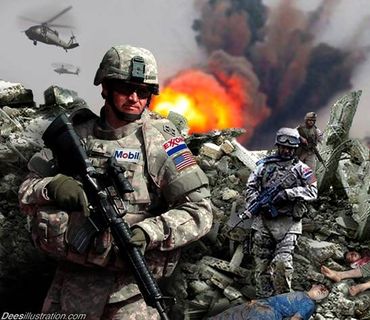 Those benefiting most from the privatized terror economy can derive much advantage from false flag terrorism which may involve the development of assets and double agents among demonized groups. These assets can be encouraged and helped to commit acts of violence, or they can be set up as patsies to be blamed for crimes made to look like the work of enemy aliens acting autonomously. In this fashion the power of public fear is mobilized to clear the way for, say, foreign wars or violations of civil liberties at home. In this fashion the promise of security can be commodified and marketed by private mercenary companies such as Blackwater/Xe. In this fashion, public opinion can be harnessed for the advancement of many agendas of business and government.
Those benefiting most from the privatized terror economy can derive much advantage from false flag terrorism which may involve the development of assets and double agents among demonized groups. These assets can be encouraged and helped to commit acts of violence, or they can be set up as patsies to be blamed for crimes made to look like the work of enemy aliens acting autonomously. In this fashion the power of public fear is mobilized to clear the way for, say, foreign wars or violations of civil liberties at home. In this fashion the promise of security can be commodified and marketed by private mercenary companies such as Blackwater/Xe. In this fashion, public opinion can be harnessed for the advancement of many agendas of business and government.
An important laboratory for the development of the privatized terror economy was the Bank of Credit and Commerce International, whose machinations were exposed as part of the same continuum of corruption that came to light in the Iran-Contra scandal. The Pakistani-based, Saudi-funded global financial institution known as the BCCI provided a venue of transaction bringing together national security agencies including the CIA with specialists in drug dealing, pipeline planning, construction and protection, regime change, nuclear proliferation, money laundering, sponsored jihad, and political bribery.xxiii
Even this brief overview of the variety of interests served by the dominant interpretation of what happened on 9/11 helps to suggest the power of the historical forces moving through the actions and words of Dick Cheney when he was very busy in the Bunker under the White House during the most decisive hours of September 11, 2001. In his new memoire Cheney repeats the account of his actions that contradicts the testimony of former Transportation Secretary, Norman Mineta. Mineta continues to insist that Cheney was already in the Bunker and busily engaged in directing operations when the Transportation Secretary entered this facility at 9:20 in the morning of 9/11.
Cheney attempts to cover himself by twice affirming in his memoire that the events he helped influence through the still-unknown array of executive orders he gave on 9/11 are to be seen as part of “the fog of war.” xxiv Clearly Cheney intends for this fog of war to continue to shroud public understanding of what actually took place during the hours when the US Vice-President was at the controls of the military-industrial complex as a tsunami of transformation was made to sweep over global geopolitics.
The characterization by Cheney and Bush of 9/11 as an act of war requiring retaliation, rather than as a complex crime requiring careful investigation, has created a crisis of credibility and legitimacy. This crisis has contributed substantially to the loss of trust and confidence of millions of citizens in our own governments, in our own instruments of public policy and in the media venues we depend on for accurate information. Certainly the failure of the responsible authorities to do a credible investigation of the events of 9/11, including what transpired with Cheney in the Bunker, helped to harden the determination felt by many of the citizen jurists who gathered at the Vancouver Club on September 26 to insist that the rule of law must be upheld through the arrest of Dick Cheney for many suspected crimes.
From Merciless Indian Savages to Unlawful Enemy Combatants
 Cheney begins his book with a prologue outlining his version of what happened on 9/11. Cheney indicates that he ended this momentous day by flying in a helicopter over the Pentagon. Cheney claims that this bird’s eye view caused him to consider historical comparisons. He writes,
Cheney begins his book with a prologue outlining his version of what happened on 9/11. Cheney indicates that he ended this momentous day by flying in a helicopter over the Pentagon. Cheney claims that this bird’s eye view caused him to consider historical comparisons. He writes,
As Marine Two gained altitude, we could see the Pentagon. The building was lit up by the rescue teams still at work, and smoke was rising from it. All day long I had seen images of the World Trade Center and the Pentagon on TV. Seeing the site of an attack firsthand brought home the vulnerability of the United States and the dangers that America faced. I thought about the fact that the city of Washington had come under attack in 1814 at the hands of the British. Now 187 years later, al Qaeda had demonstrated that they could deliver a devastating blow to the heart of America’s economic and military power. On this day all our assumptions about our own security had changed. It was a fundamental shift.xxv
There is much more than meets the eye in Cheney’s conflation of the US conflict with Great Britain in the War of 1812 and his allegation that on 9/11 America faced a surprise attack from an independent and autonomous organization of enemy aliens known as al-Qaeda. The War of 1812 renewed many of the old antagonisms of the civil war in British North America that gave rise to the secessionist forces taking up arms after 1775 to create the United States. While the British Armed Forces did succeed in briefly assaulting Washington with only minimal resistance from the dispirited locals, the War of 1812 had started primarily as an Indian war posing the combined fighting forces of Tecumseh’s Indian Confederacy of Canada against and an Indian fighting army composed of recruits largely from Tennessee and Kentucky. The Indian role in the conflict was so important because at the onset of hostilities the great bulk of the British Army was deployed in fighting Napoleon’s forces in Europe. There were few British soldiers left to defend the expansive frontiers of Canada against Napoleon’s ally, the US government.
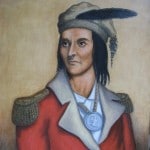
The armed resistance of the Indian Confederacy of Canada to the westward expansion of the United States in the War of 1812 constitutes by far the most serious Aboriginal check throughout the entire history of the future superpower’s transcontinental expansion. This confederacy was led by Tecumseh, whose nemesis, the future US President William Henry Harrison, identified “as one of those uncommon geniuses which spring up occasionally to produce revolutions and overturn the established order of things.”xxvi Tecumseh’s goal was to push back American power in alliance with British imperial forces. Tecumseh hoped that the Indian Confederacy’s British allies would agree that it was in their interests to impose permanent limitations on the expansionary proclivities of US empire builders by recognizing in international law a permanent Indian state—a buffer state; an Aboriginal Dominion– north of the Ohio River.
A military strategist and adept law giver, Tecumseh followed in the footsteps of Pontiac who had led an earlier assault on British power that proved instrumental in persuading the imperial government to designate much of the North America’s interior as lands reserved to the Indians as their hunting grounds. As Tecumseh well understood, the United States had been created to push aside this imperial obstruction to the more rapid westward expansion of Anglo-American settlements. Tecumseh consistently brought his considerable knowledge of history to his explanations of the plight of Indigenous peoples at a time when their Aboriginal lands were the being rapidly devoured and transformed into the primal capital of a New World country geared to the needs of immigrants and their descendents. Much like the Global War on Terror, therefore, the War of 1812 brought to the surface many of the most profound kinds of questions about the nature of colonialism on the frontiers of empire. Many of these questions orbited around the relationship between conquest, the rule of law, resource exploitation, land title, jurisdiction and the treatment of Indigenous peoples.
The War of 1812 was fought on the US side, therefore, largely to break up the thick web of connections that had developed between some officials of the British imperial government and the Indians of the North American interior. Chronicler Julius W. Pratt gave voice to this perspective by describing the War of 1812 as a US effort to obliterate the “unholy alliance” of the British in Canada “with the Western Indians.”xxvii Canadian fur trader of James McGill looked at the War of 1812 from the opposite side. A dominant force in Montreal’s continent-spanning consortium known as the North West Company, McGill wrote, “The Indians are the only Allies who can avail in the defense of the Canadas. They have the same interests as us, and alike are objects of American subjugation, if not extermination.”xxviii
These British alliances in the vast Indian Country of North America were in large measure inherited from the French-Aboriginal fur trade of Canada. After the British conquest of the imperial forces of France on the Plains of Abraham in 1759, a new class of British mercantilist, many of Scottish background, took over the French-Aboriginal fur trade. Hiring many metis and candiens as voyageurs they expanded the reach of the British imperial fur trade all the way to the shores of the Beaufort Sea in the north and the Pacific coast in the west. Many key figures who built up the North West Company as an instrument of empire were veterans of the British imperial Indian Department. Its founder, Sir William Johnson, had distinguished himself by expanding British influence through the cultivation of friendly relations with Indian communities beyond the frontiers of Anglo-American settlements. His advice to his superiors in the British Board of Trade and Plantations was codified in the Royal Proclamation of 1763.

There is no doubt that the limited but significant recognition of Indian rights in the Royal Proclamation was essential in the alignment and forces that made Indigenous peoples allies of the British and enemies of the United States in the War of 1812. This understanding shone through in the late nineteenth century in a pivotal court case important in determining the balance of power in relations between provincial and Dominion authorities in Canada. The St. Catherine’s Milling case flowed from discordant interpretations of the meaning of an important constitutional provision referring to “lands reserved to the Indians.” In his minority decision on the case, Supreme Court of Canada Judge Samuel Henry Strong referred to the importance of the Royal Proclamation in stemming “Indian wars and massacres” in British North America after 1763. Judge Strong ruled that “Indian nations from that time became and have since continued to be the firm and faithful allies of the Crown and rendered it important military service in two wars, the war of the Revolution and that of 1812.”xxix
The Indian provisions in the Royal Proclamation of 1763, which are being applied to this day in the negotiation of Indian treaties in British Columbia, form a kind of antithesis to the anti-Indian provisions in the American Declaration of Independence. The Royal Proclamation was designed to incorporate Canada into British North America after the conflict remembered in the United States to this day as the French and Indian War. Among its several provisions the Royal Proclamation set out an orderly procedure for the westward expansion of Anglo-American settlements. This expansion, it was stipulated, could not take place without the prior consent of Indian people. If a particular parcel of reserved Indian land was to be sought as settler land, the appropriate Indian group would be consulted in negotiations that, if successful, would give rise to the terms of a new treaty of Crown-Aboriginal alliance.
Even this limited recognition of Indian rights was rejected by many farmers and land speculators seeking to expand their fortunes by acquiring new wealth from the transformation of Indian Country into private property. The so-called Paxton Boys in the frontier regions of Pennsylvania went on a killing spree to demonstrate their hostility to the Royal Proclamation of 1763. They directed their lethal rage at pacifist Moravian Indians who had settled with their missionary in the Susquehanna Valley. Some of these same Paxton boys went on to achieve fame in the Continental Army of the nascent United States.xxx Their hostility to the Royal Proclamation was shared by the likes of Benjamin Franklin and General George Washington, politicians with a deep interest and involvement in the land speculations advanced by many Anglo-American colonization companies. The United States was created in part to advance the expansionary plans of some of these colonization companies and the land speculators behind them.xxxi
In drafting the American Declaration of Independence Thomas Jefferson gave voice to the hostility felt by many Anglo-Americans to the limits placed on frontier expansion by even the limited recognition afforded Aboriginal rights in the Royal Proclamation of 1763. Even though the Royal Proclamation had only been sporadically and half-heartedly enforced, the drafter of the most consequential political manifesto ever issued ended the document’s condemnations aimed at the British monarch with the following accusation: “He [King George]has endeavoured to bring on the inhabitants of our frontiers, the merciless Indian Savages whose known rule of warfare, is an undistinguished destruction of all ages, sexes and conditions.”
[youtube ggyTFlCoB7U]
An Academic Red Coat Responds to the Tea Party.
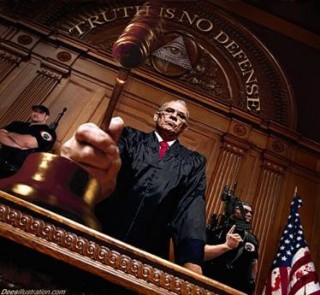 This provision in the founding document of the United States deserves much more attention that it thus far been afforded. The accusation is telling that King George was considered guilty of some terrible crime for trying to incorporate Indigenous peoples into the British Empire on the basis of the rule of law. The US was founded on a primal criminalization of those societies indigenous to the lands that the new polity was about to appropriate. The Indigenous peoples on the new republic’s western frontiers were afforded the identity of natural-born terrorists convicted without trial of being so violent and anarchistic that they could be counted on to visit undistinguished destruction even on women, children, the elderly and the disabled.
This provision in the founding document of the United States deserves much more attention that it thus far been afforded. The accusation is telling that King George was considered guilty of some terrible crime for trying to incorporate Indigenous peoples into the British Empire on the basis of the rule of law. The US was founded on a primal criminalization of those societies indigenous to the lands that the new polity was about to appropriate. The Indigenous peoples on the new republic’s western frontiers were afforded the identity of natural-born terrorists convicted without trial of being so violent and anarchistic that they could be counted on to visit undistinguished destruction even on women, children, the elderly and the disabled.
Thus it can be said the Global War on Terror really began not on 9/11 but rather on July the 4th, 1776, when the technique was introduced of demonizing as bloodthirsty savages those Indigenous peoples standing on valuable natural resources. The extension after 1776 of the American Declaration of Independence’s criminalization and racial profiling to Indigenous peoples on successive frontiers was demonstrated again and again in scores of Indian wars and unpunished vigilante killing sprees facilitating the trans-continental expansion of the United States. In the twentieth century, when Red Coats and Red Indians were no longer perceived as a threat, the Red Communists were cast in the role of the enemies of America’s Manifest Destiny to dominate the world through the universalization of its political economy of militarization and domination.
With the demise of the main Red Communist foe the empire of private property required a new enemy to replicate the role of merciless Indian savages in the twenty-first century. Emerging from the US-backed mujahedeen that was armed and financed by the United States to overthrow the Soviet-backed puppet regime of Afghanistan, al-Qaeda was cast on 9/11 as the necessary Other to be defeated in the order to expand the frontiers of life, liberty and the pursuit of happiness. But this pursuit of happiness, which tends to translate into the pursuit of property, has clearly runs its course as the kleptocracy that once fed off the theft of resources of Indigenous peoples has turned to the theft of family property from an increasingly dispossessed and imperiled middle class.
Dick Cheney’s ease in moving from the enemies of the nascent US empire in the War of 1812 to the new enemies of the Anglo-American-Israeli empire in the 9/11 Wars helps to clarify the persistence of primal patterns of imperial expansion into the twenty-first century. The justification for the imperial expansion that began in 1492 was based on the claim that the Spanish conquest of America was directed at saving savages from an eternity of hell through the salvation of the Roman Catholic faith. The meme of civilization’s imperative to ascend over savagery found its way into the founding manifesto of the United States of America. As Dick Cheney’s reflections on the history of his own country attest, it seems the Global War on Terror has brought the Imperial Republic back to its Indian fighting roots.
The finer spirit of the Indian provisions in the Royal Proclamation of 1763 would seem to point the way to a route of escape from the anti-Indian provisions of the American Declaration of Independence as now globalized through a fraudulent interpretation of the events of 9/11. The heritage of the Royal Proclamation extends from the politics of Pontiac, Sir William Johnson and Tecumseh all the way to the process, however imperfect, of negotiating Crown-Aboriginal treaties in British Columbia. Alternatively Dick Cheney is the inheritor of the legacy of the Paxton Boys who murdered many Indigenous peoples with impunity. Hence one of the core dilemmas of our time was embodied by the hosting of Cheney in a venue associated with the sexual brutalization of Aboriginal children by rich and influential pedophiles who are treated as if they are above the law.
End Notes
Dick Cheney with Liz Cheney, In My Time: A Personal and Political and Memoire (New York: Threshold Editions, 2011)
ii Hall, Earth into Property: Colonization, Decolonization, and Capitalism (Montreal: McGill-Queen’s University Press, 2010), pp. 350-431
iii James Mann, The Rise of the Vulcans: The History of Bush’s War Cabinet (New York: Viking 2004); Peter Dale Scott, The Road to 9/11: Wealth, Empire and the Future of America (Berkeley: University of California Press, 2008), pp, 191-193
iv Carlito Pablo, “Vancouver Lawyer Gail Davidson Seeks Dick Cheney’s Arrest,” 8 September, 2011
v John Bartlet Brebner, North Atlantic Triangle: The Interplay Between Canada, the United States and Great Britain (New Haven: Yale University Press, 1945)
vi Don Davies’ Letter to Immigration Minister Jason Kenney re Dick Cheney, 23 September, 2011
vii In posing questions about Cheney’s functioning in the Bunker I follow closely the questions posed and internal contradictions in the available evidence identified by Peter Dale Scott in chapters 12-14 of The Road to 9/11, pp. 194-245
viii Noam Chomsky, 9/11 (New York: Seven Stories Press, 2002), pp. 17-18
ix Webster Griffin Tarpley 9/11 Synthetic Terror, Made in the USA (Joshua Tree California: Progressive Press, 2006), p. 280
x See Hall, “From Hiroshima to Fukushima, 1945-2011: A Nuclear Narrative of Hubris and Tragedy,” VT, 28 March, 2011
xi Peter Dale Scott, The Road to 9/11, pp. 236-237
xii See Doug Saunders, “The Fourth World War,” The Globe and Mail, 6 September, 2003, pp. F6-F7
xiii Haaretz Service and Reuters, Report: Netanyahu Says 9/11 Terror Attacks Good for Israel, 16 April, 2008
xiv See Robert Scheer, The Pornography of Power: Why Defense Spending Must Be Cut (New York: Twelve, 2009)
xvi Hall, “Scholarship, Scams and Credentials in an Academic House of Cards,” Salem-News, 28 October, 2010
Hall, “Waging the Battle for Reality: A Review Essay on a Propagandists’ Journey in Search of the ‘Conspiracist Underground,’” Salem-News, 29 May, 2011
xvii Both texts are published in New York by Farrar, Straus and Giroux, the former in 1986 and the latter in 1997
xviii Bernard Lewis, Islam and the West (New York: Oxford University Press, 1993”
xix Samuel P. Huntington, The Clash of Civilizations and the Remaking of World Order (New York: Simon and Schuster, 1996)
xx John Pilger, Hidden Agendas (London: Vintage, 1998) pp. 468-471
xxi Fred Anderson and Andrew Cayton, The Dominion of War: Empire and Liberty in North America, 1500-2000 (New York: Viking, 2004)
xxii Nafeez Mosaddeq Ahmed, The London Bombings: An Independent Inquiry (London: Gerald Duckworth and Company, 2006)
xxiii Tariq Ali, A Banker for All Seasons: Bank of Crooks and Cheats Incorporated (London: Seagull, 2008); Peter Dale Scott, The Road to 9/11, pp. 114-117
xxiv Dick Cheney, In My Time, pp. 3, 329
xxvi William Henry Harrison cited by Herbert Charles Walter Goltz, “Tecumseh, the Prophet and the Rise of the Northwest Indian Confederacy (Ph.D. thesis, University of Western Ontario, 1973), p. 255-256
xxvii Julius Pratt cited in Patrick C.T. White, A Nation on Trial: America and the War of 1812 (New York: John Wiley, 1967), p. 99
xxviii James McGill cited in G.F. G. Stanley, “The Indians and the War of 1812,” in Morris Zaslow, ed., The Defended Border: Upper Canada and the War of 1812 (Toronto: Macmillan, 1964), p. 178
xxix Reports of the Supreme Court of Canada, Vol, 13, pp. 609-610, cited in Hall, “The St. Catherine’s Milling and Lumber Company versus the Queen: Indian Land Rights as a Factor in Federal-Provincial Relations in Nineteenth Century Canada,” in Kerry Abel and Jean Friesen ed., Aboriginal Land Use in Canada: Historical and Legal Aspects (Winnipeg: University of Manitoba Press, 1991), p. 279
xxx David Dixon, Never Come to Peace Again, Pontiac’s Uprising and the Fate of the British Empire in North America (Norman: University of Oklahoma Press, 2005), pp. 247-275
xxxi Clarence Walworth Alvord, The Mississippi Valley in British Politics, 2 Vols. (Cleveland: The Arthur H. Clark Company, 1917)
Related Post :
Dick Cheney in Canada: Breakdown of the Rule of Law

Anthony Hall is a Professor of Globalization Studies at the University of Lethbridge in Alberta Canada where he has taught for 25 years. Along with Kevin Barrett, Tony is co-host of False Flag Weekly News at No Lies Radio Network. Prof. Hall is also Editor In Chief of the American Herald Tribune. His recent books include The American Empire and the Fourth World as well as Earth into Property: Colonization, Decolonization and Capitalism. Both are peered reviewed academic texts published by McGill-Queen’s University Press. Prof. Hall is a contributor to both books edited by Dr. Barrett on the two false flag shootings in Paris in 2015.
Part II was selected by The Independent in the UK as one of the best books of 2010. The journal of the American Library Association called Earth into Property “a scholarly tour de force.”
One of the book’s features is to set 9/11 and the 9/11 Wars in the context of global history since 1492.
ATTENTION READERS
We See The World From All Sides and Want YOU To Be Fully InformedIn fact, intentional disinformation is a disgraceful scourge in media today. So to assuage any possible errant incorrect information posted herein, we strongly encourage you to seek corroboration from other non-VT sources before forming an educated opinion.
About VT - Policies & Disclosures - Comment Policy




